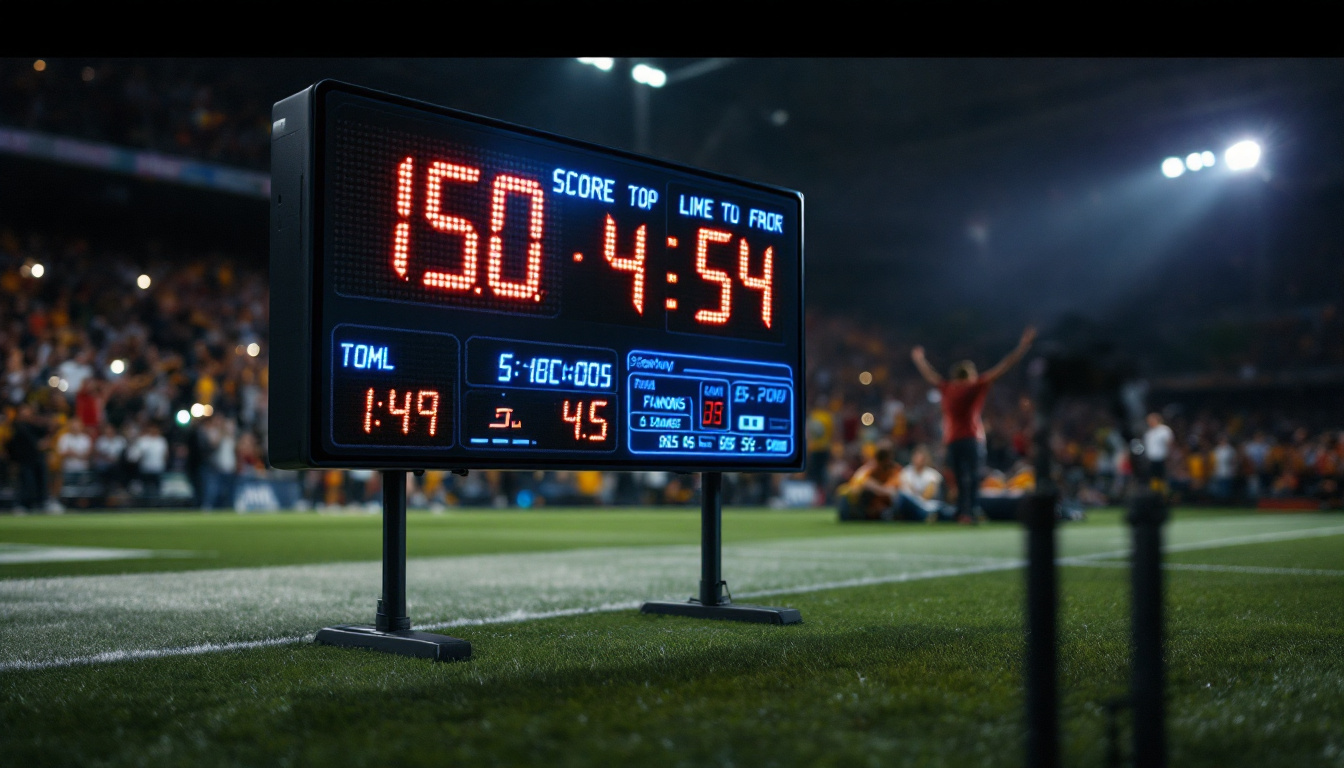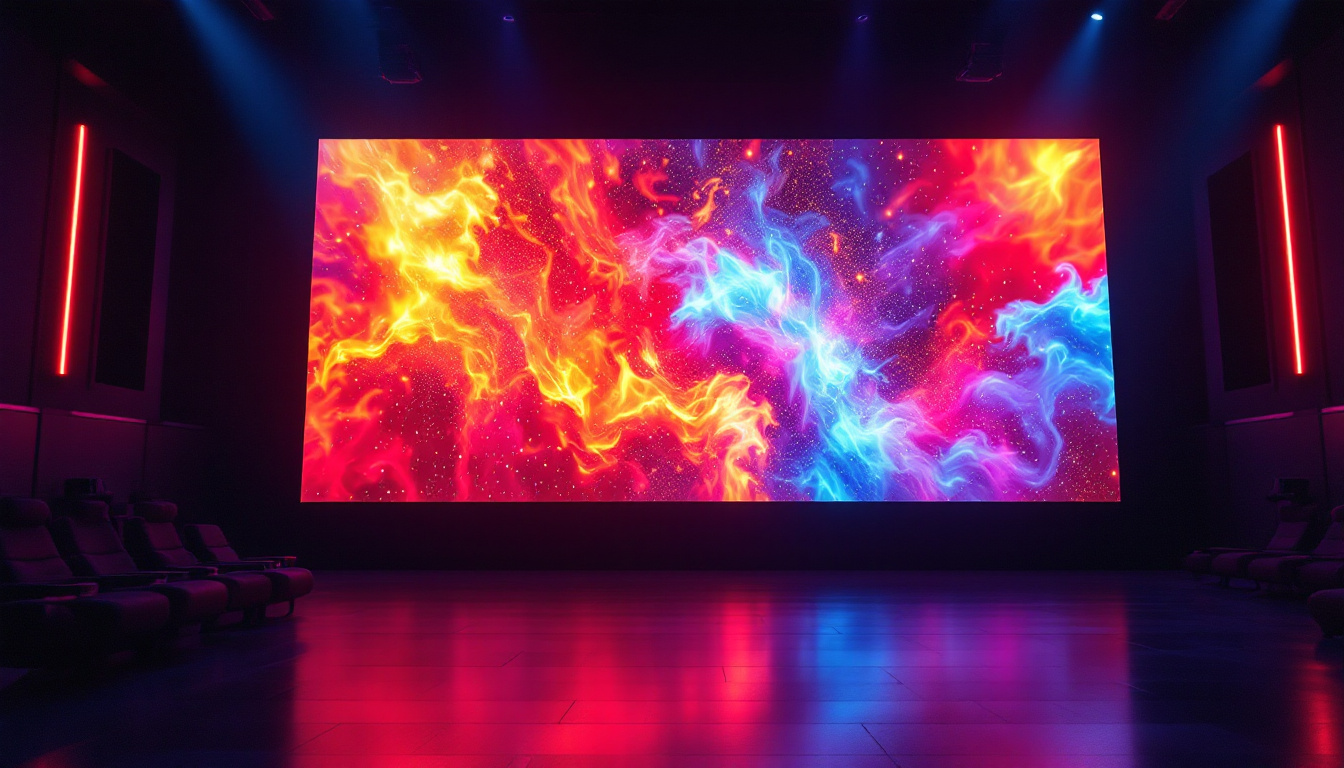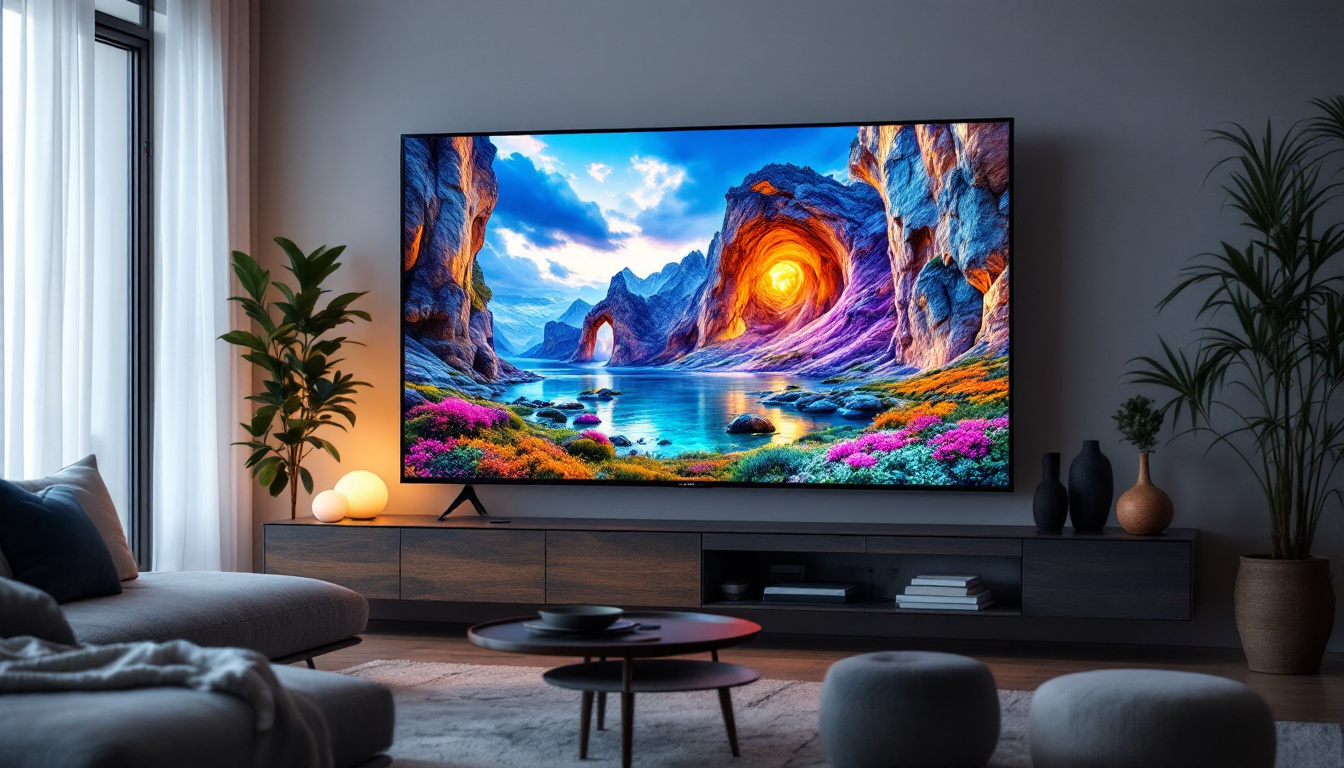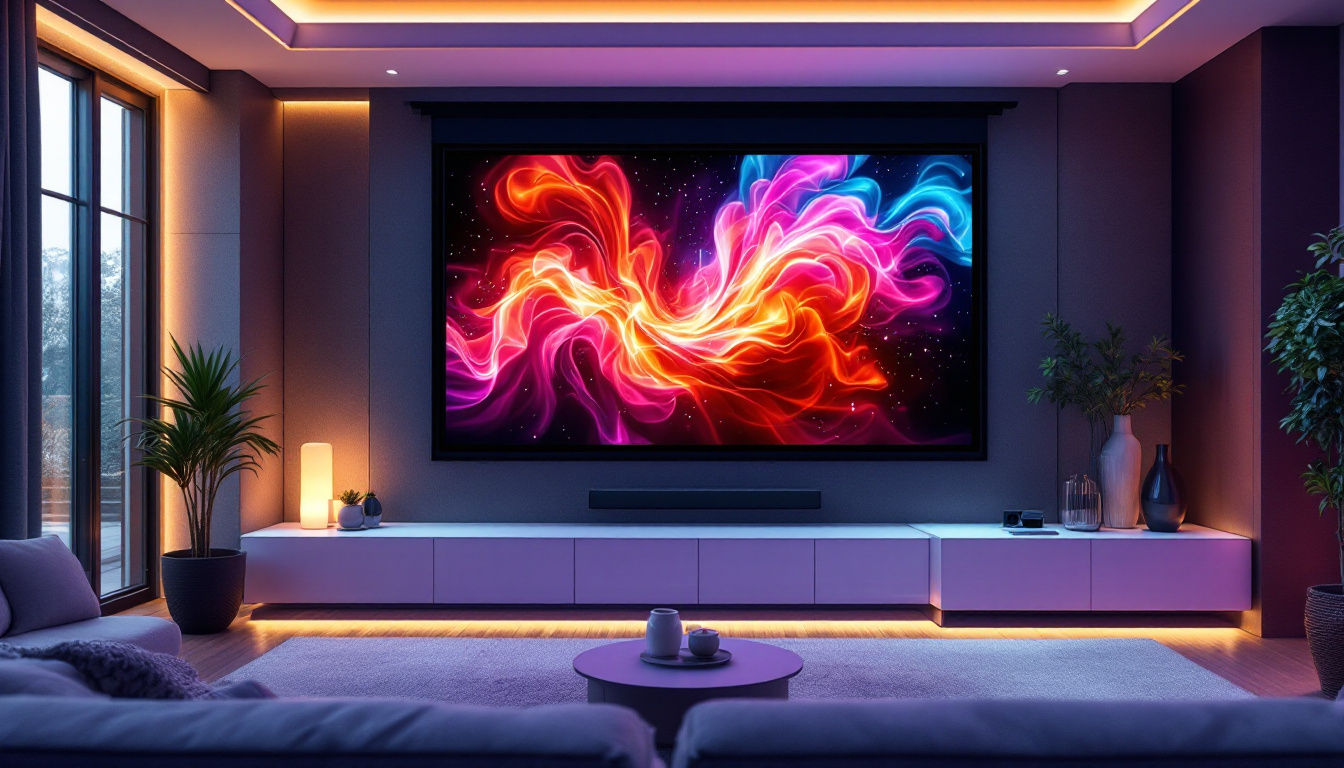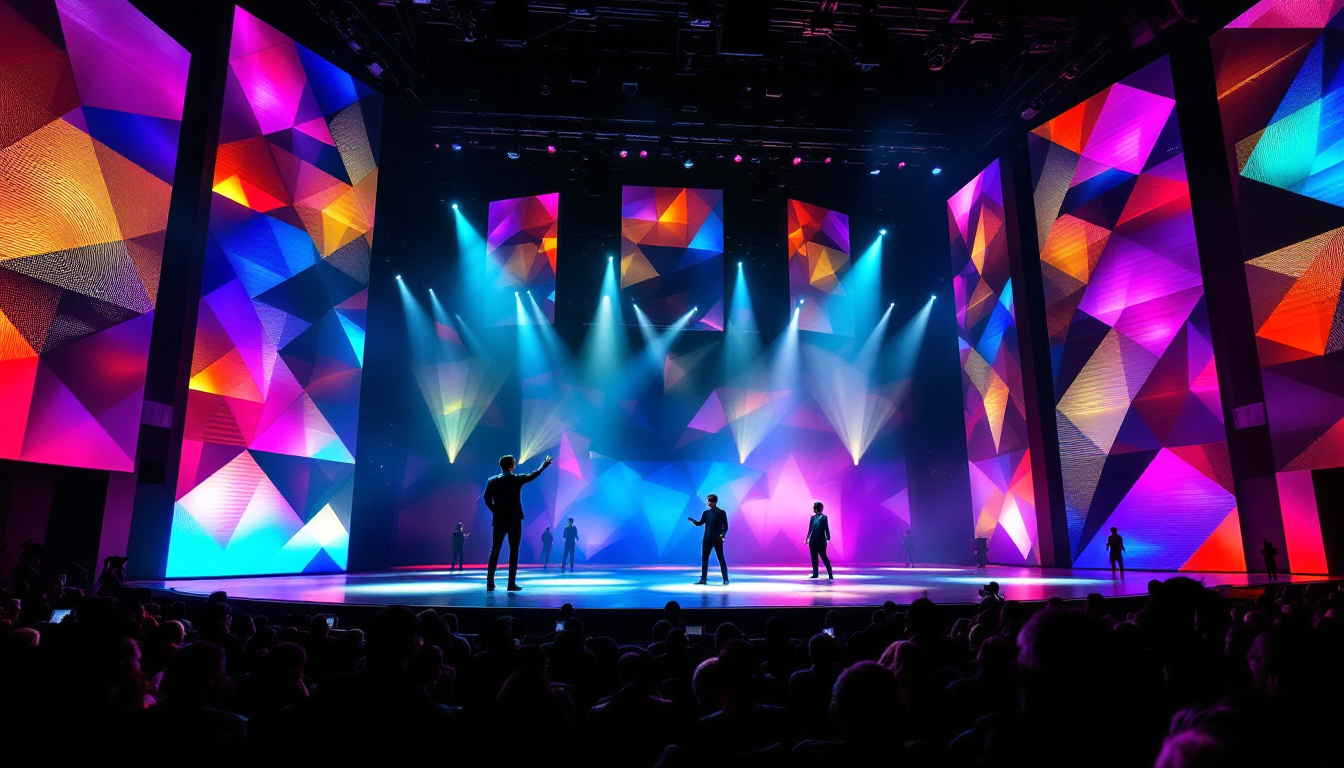Best TV For Church Sanctuary: LED Display Explained
In today’s digital age, the integration of technology in places of worship has become increasingly important. Churches are now utilizing LED displays not just for presentations and announcements, but also to enhance the overall worship experience. Choosing the best TV for a church sanctuary involves understanding the unique needs of the space, the audience, and the type of content that will be displayed. This article delves into the factors to consider when selecting an LED display for a church sanctuary, along with recommendations and insights into the technology itself.
Understanding LED Displays
LED (Light Emitting Diode) displays have revolutionized the way visual content is presented. They offer vibrant colors, high brightness, and energy efficiency, making them an ideal choice for large venues like church sanctuaries. Unlike traditional LCD screens, LED displays provide better contrast and can be viewed from a wider range of angles, which is crucial in a setting where the audience is often spread out.
Advantages of LED Displays
One of the most significant advantages of LED displays is their exceptional brightness. This feature is particularly beneficial in church sanctuaries that may have varying lighting conditions. Whether it’s a bright sunny day or a dimly lit evening service, LED displays maintain clarity and visibility, ensuring that the congregation can easily see the content being presented.
Additionally, LED displays are known for their longevity and durability. They can withstand the rigors of daily use without significant wear and tear. This reliability is essential for churches that host multiple services and events throughout the week. Moreover, the low maintenance requirements of LED technology mean that churches can allocate their resources more effectively, focusing on community engagement and outreach rather than technical upkeep.
Types of LED Displays
When considering an LED display for a church sanctuary, it’s important to understand the different types available. Common options include direct view LED screens, LED video walls, and traditional LED TVs. Direct view LED screens are often used for large installations, while LED video walls can create a stunning visual impact by combining multiple panels. Traditional LED TVs, on the other hand, are more suitable for smaller spaces or specific applications within the church. Each type has its own set of features that cater to different needs, allowing churches to choose the best fit for their specific environment and audience size.
In addition to these common types, there are also specialized LED displays designed for outdoor use, which can withstand weather elements while providing bright, clear visuals. These outdoor displays are perfect for churches with outdoor services or events, as they can effectively capture the attention of passersby and enhance community visibility.
Key Specifications to Consider
Several specifications should be taken into account when selecting an LED display for a church sanctuary. Key factors include resolution, brightness (measured in nits), refresh rate, and connectivity options. A higher resolution ensures that images and text are sharp and clear, while adequate brightness is crucial for visibility in various lighting conditions. Furthermore, a good refresh rate is essential for displaying video content smoothly, and a variety of connectivity options allows for easy integration with existing technology.
Another important specification to consider is the pixel pitch, which refers to the distance between the center of one pixel to the center of the adjacent pixel. A smaller pixel pitch results in a higher pixel density, leading to more detailed images and text, which is particularly beneficial for close-up viewing. This is especially relevant in church settings, where congregants may be seated at varying distances from the display. Understanding these specifications will empower church leaders to make informed decisions that enhance the worship experience for their community.
Choosing the Right Size
The size of the LED display is a critical factor that can significantly impact the viewing experience. A display that is too small may strain the eyes of congregants sitting farther away, while an overly large screen could overwhelm the space and distract from the worship experience.
Determining Optimal Size
To determine the optimal size for an LED display in a church sanctuary, consider the distance from the screen to the farthest seat. A general guideline is that the height of the screen should be about one-third of the distance from the viewer to the display. For example, if the farthest seat is 30 feet away, a screen height of approximately 10 feet would be ideal. This ensures that everyone in the congregation can see the content clearly without straining their eyes.
Aspect Ratio Considerations
Aspect ratio is another important consideration when selecting an LED display. The most common aspect ratios are 16:9 and 4:3. The 16:9 ratio is ideal for widescreen content, such as videos and presentations, while the 4:3 ratio may be more suitable for traditional slideshows or hymn lyrics. Understanding the type of content that will be displayed most frequently can help in making the right choice.
Installation and Placement
Once the right LED display has been selected, the next step is installation and placement. The location of the display within the sanctuary can greatly influence its effectiveness. Careful planning is required to ensure that the screen is positioned for optimal visibility while also complementing the overall aesthetic of the space.
Choosing the Right Location
When choosing a location for the LED display, consider factors such as sightlines, glare, and accessibility. The display should be placed where it can be easily viewed from all angles without obstruction. Additionally, avoiding direct sunlight or bright overhead lights can help minimize glare, which can detract from the viewing experience.
Mounting Options
There are various mounting options available for LED displays, including wall mounts, ceiling mounts, and freestanding units. Wall mounts are often the most space-efficient and can create a clean, professional look. Ceiling mounts can be useful in larger sanctuaries where floor space is limited. Freestanding units offer flexibility and can be moved as needed for different events or services.
Content Management and Integration
Having a high-quality LED display is only part of the equation. Effective content management and integration with existing church technology are essential for maximizing the display’s potential. This includes everything from presentation software to video streaming capabilities.
Content Management Systems
Investing in a robust content management system (CMS) can streamline the process of updating and managing content displayed on the LED screen. A good CMS allows for easy scheduling of content, ensuring that announcements, sermon notes, and other important information are displayed at the right time. Look for systems that offer user-friendly interfaces and compatibility with various media formats.
Integration with Audio-Visual Systems
For a seamless worship experience, the LED display should be integrated with the church’s existing audio-visual systems. This includes microphones, cameras, and sound systems. Proper integration allows for synchronized audio and visual elements, enhancing the overall impact of presentations and services. It’s advisable to consult with AV professionals to ensure that all components work harmoniously together.
Budget Considerations
Budget is often a significant factor when selecting an LED display for a church sanctuary. While it may be tempting to opt for the most affordable option, it’s important to consider the long-term value and performance of the display. Investing in a quality LED display can yield significant benefits in terms of durability, functionality, and overall impact.
Initial Costs vs. Long-Term Value
Initial costs for LED displays can vary widely based on size, resolution, and features. However, it’s crucial to look beyond the upfront price tag. A higher-quality display may come with a higher initial cost but can save money in the long run due to lower maintenance costs and a longer lifespan. Additionally, consider the potential for increased engagement and participation in church activities due to enhanced visual presentations.
Funding Options
Many churches explore various funding options to help offset the costs of purchasing an LED display. This may include fundraising campaigns, grants, or donations from congregation members. Engaging the church community in the funding process not only alleviates financial pressure but also fosters a sense of ownership and pride in the new technology.
Maintenance and Support
Once an LED display is installed, regular maintenance is essential to ensure its longevity and performance. Understanding the maintenance requirements and having a support plan in place can prevent issues from arising and keep the display functioning optimally.
Regular Maintenance Practices
Regular maintenance practices for LED displays include cleaning the screen, checking connections, and updating software. Dust and debris can accumulate on the screen, affecting image quality. A simple cleaning routine can help maintain clarity. Additionally, ensuring that all cables and connections are secure can prevent disruptions during services.
Support and Warranty Options
When purchasing an LED display, it’s important to consider warranty and support options. Many manufacturers offer warranties that cover parts and labor for a specified period. Having access to technical support can also be invaluable, especially for churches that may not have in-house AV expertise. Understanding these options can provide peace of mind and ensure that any issues can be addressed promptly.
Conclusion
Choosing the best LED display for a church sanctuary involves careful consideration of various factors, including size, placement, content management, and budget. By understanding the unique needs of the church and its congregation, it is possible to select a display that enhances the worship experience and fosters community engagement. With the right technology in place, churches can effectively communicate their messages, create memorable experiences, and inspire their congregations for years to come.
As technology continues to evolve, staying informed about the latest advancements in LED display technology and best practices will ensure that churches can adapt and thrive in the digital age. Investing in quality equipment and thoughtful integration will not only enhance the visual experience but also contribute to the overall mission of the church.
Discover LumenMatrix LED Solutions for Your Church
Ready to elevate your church sanctuary with the latest in LED display technology? LumenMatrix offers a wide range of innovative solutions tailored to create immersive worship experiences. From Indoor and Outdoor LED Wall Displays to Custom and All-in-One LED Displays, our products are designed to captivate your congregation and enhance your church’s visual communication. Embrace the future of church engagement with LumenMatrix’s cutting-edge displays. Check out LumenMatrix LED Display Solutions today and transform your sanctuary into a dynamic space for connection and inspiration.













